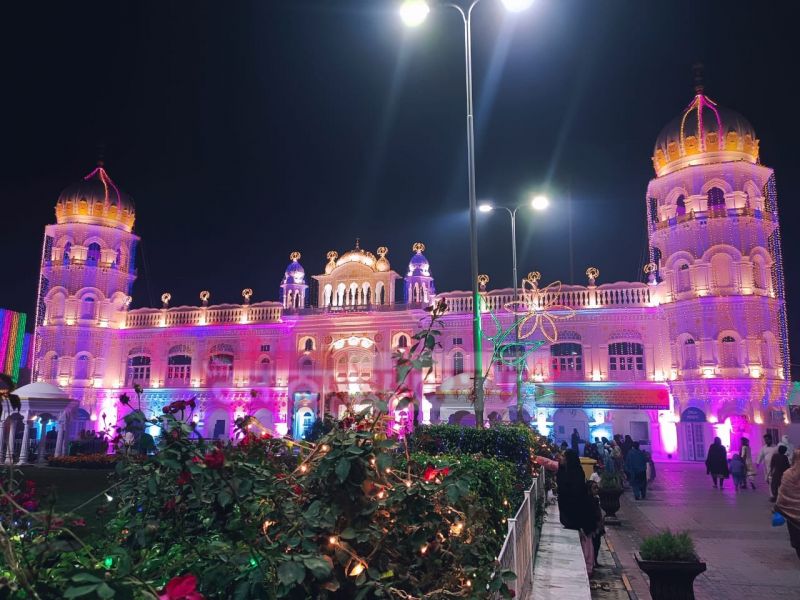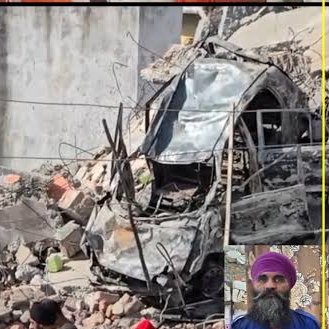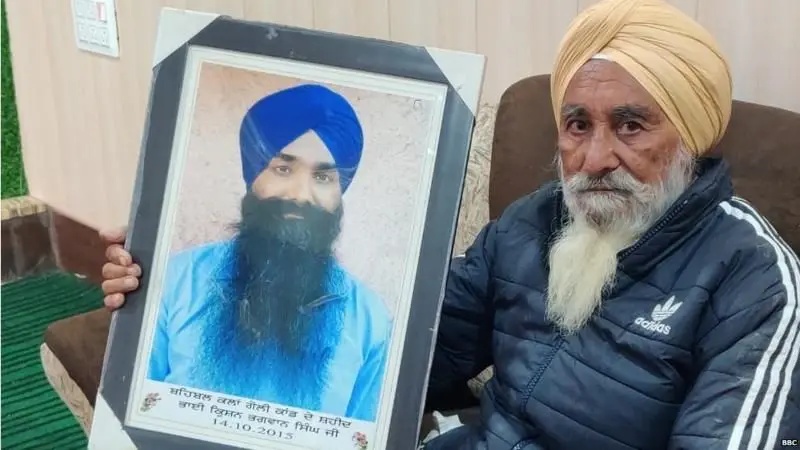
OPERATION BLUESTAR 1984
Operation Blue Star June 1984 was an Indian military operation, ordered by Indira Gandhi, then Prime Minister of India, under the pretext of removing Sikh separatists from the Golden Temple in Amritsar. The insurgents, led by Jarnail Singh Bhindranwale, were accused of amassing weapons in the Sikh temple. The operation was carried out by Indian army troops with tanks and armoured vehicles.[6] Militarily successful, the operation aroused immense controversy, and the government's justification for the timing and style of the attack are highly debated. Operation Blue Star was included in the Top 10 Political Disgraces by India Today magazine. Official reports put the number of deaths among the Indian army at 83 and the number of civilian deaths at 492, though some independent estimates run as high as 1500. In addition, the CBI is considered responsible for seizing historical artifacts and manuscripts in the Sikh Reference Library before burning it down. The military assault led to an uproar amongst Sikhs worldwide and the increased tension following the action led to assaults on members of the Sikh community within India. Some Sikh soldiers in the Indian army mutinied, many Sikhs resigned from armed and civil administrative office and a few returned awards and honors they had received from the Indian government.Four months after the operation, on 31 October 1984, Indira Gandhi was assassinated by two of her Sikh bodyguards in what is viewed as an act of vengeance. Following her assassination, more than 5000 Sikhs were killed in anti-Sikh pogroms. Within the Sikh community itself, Operation Blue Star has taken on considerable historical significance and is often compared to what Sikhs call 'the great massacre', the 1761 slaughter of Sikhs by the Afghan invader Ahmad Shah Abdali. Operation Bluestar, which began in the wee hours of June 6, 1984, was like a dagger through the heart for Sikhs everywhere. Thousands railed against the Indian State, the army, and all those who were connected in any way with the operation. A large number of Sikh soldiers, enraged by rumours that the Golden Temple had been damaged (the temple itself remained untouched, though the Akal Takht was damaged), deserted the armed forces. Author Khushwant Singh famously returned his Padma Bhushan award in protest. Four months and three weeks later, Indira Gandhi paid the ultimate price for ordering Operation Bluestar. ATTACK ON OUR FAITH ! SIKH Smoke rises in the Golden Tample complex during the brutal Indian army attack on June 1984. On this day the foundation for an Independent Sikh Homeland was laid. "OPERATION BLUESTAR" is the code name for the June 1984 attack on Sri Harimandir Sahib, Amritsar, by the Indian Armed Forces. This attack was conducted under the pretext of "flushing out terrorists" but was designed to cause maximum damage to the Temple Complex and the Sikhs inside. The attack took place on the day of Guru Arjan Dev Patshah's Shahadat Gurpurab observations. The operation was sanctioned under the orders of Indira Gandhi (then prime minister) and Zail Singh (then President). The Golden Temple Complex was attacked by the Indian Armed Forces using tanks, helicopters, and other heavy artillery. Sri Akal Takhat was desecrated during this attack. Sri Darbar Sahib sustained at least 300 bullet holes. Thousands of innocent people were murdered in cold blood. Their fault? They were attending the Martyrdom day of Guru Arjan Dev Ji. The brave GurSikh soldiers in the Akal Takhat, numbering about 250, gave extremely tough resistance to the Indian army. However, their resistance was no match to the large number of tanks, helicopters, bombs, and other heavy artillery that destroyed the Akal Takhat. The Sikh Nation rose as a whole to protest against this ghastly attack. Thousands of Sikhs were martyred in the holy precincts of Darbar Sahib. Hundereds of Sikh Army personal left their posts and marched straight to protect Darbar Sahib, many were killed or imprisoned. However, Indira Ghandhi did receive retribution for her black deeds on Oct. 31st, that same year. [Courtesy : Bhai Baldev Singh Ji] History of Sikh Reference Library (Destroyed on June 7, 84) The destruction of the Sikh Reference Library is a loss that can never be fulfilled. No wealth in the world can ever restore what was destroyed during the Operation Blue Star by the Hindu government. The Sikh Reference Library was fine until the evening of June 6, 1984. This has been verified by the in charge of the Library S. Devender Singh Duggal. The library was set ablaze on June 7, 84 in the early hours of the morning. S. Karam Singh Historian had sown the seed of scientific reasearch in Sikhism. Later Bawa Budh Singh took the initiative and established the Sikh Historical Society in Lahore in 1930. It did not flourish after his death, but his legacy lived on. On February 10, 1945 fans of Punjabi history and literature gathered at Amritsar under the leadership of Princess Bamba, daughter of Maharaja Dalip Singh and laid a foundation stone of the Sikh History Society. The main goal of this society was to present the history of the Sikh Gurus in its true form. The Sikh History Society decided to establish a Central Sikh Library on January 12, 1946. After being acquired by SGPC it received full fianancial support of the SGPC. On February 8, 1947 the Sikh Reference Library was established. It housed some rare source documents on Sikhism, the origin of Khalsa, hand-written manuscripts, Hukamnamas, Leases, Certificates, ancient pictures, etc. The Sikh History Society published its catalog of books according to which the library had 2335 Punjabi books and hand-written manuscripts. Several of them were also in Assamese, Bengali, and Sindhi, etc. It also had 1047 English books. According to a publication by Shamsher Singh Ashok (Historian and research scholar of SGPC) called "Sada Hath Likhat Sahit" (our hand-written literature) published in 1968, there were 383 volumes in this library which dealt with 980 different topics. In addition, there were many Hukamnamas by the Sikh Gurus, 2500 hand-written copies of Guru Granth Sahib, a Bir (of Guru Granth Sahib) of Bhai Hardas which bore a handwritten Mul Mantar page by Guru Teg Bahadar Ji. There were many illustrated Birs, Janamsakhis, and rare Sikh scriptures. Among many other it had "Kavendar Parkash by sant Nihal Singh; Ajit Sagar by Surjan Singh, Bhagat Sudhasar by Bhai Bidhi Das, Bhagat Premakar by poet Jassa Singh, Bansavalinama by Kesar Singh Chhibar and many more such historical books. The library had about 20,000 such books in June 1984 according to the Library officials. There were many copies of Guru Granth Sahib which were extremely valuable. There also was a manuscript which was prepared by Guru Gobind Singh five years after the martyrdom of Guru Teh Bahadar Ji. He himself added the Bani of the Ninth Guru in that manuscript at Damdama Sahib. The date of this copy of Guru Granth Sahib was 1739 Bikrami. In addition there was rare copy of Guru Granth Sahib that was obtained with great difficulty by S. Gian Singh, Chief Minsiter of Patiala from Damadama, Talwandi Sabo. This version of Guru Granth Sahib did not have Ragmala at the end.










